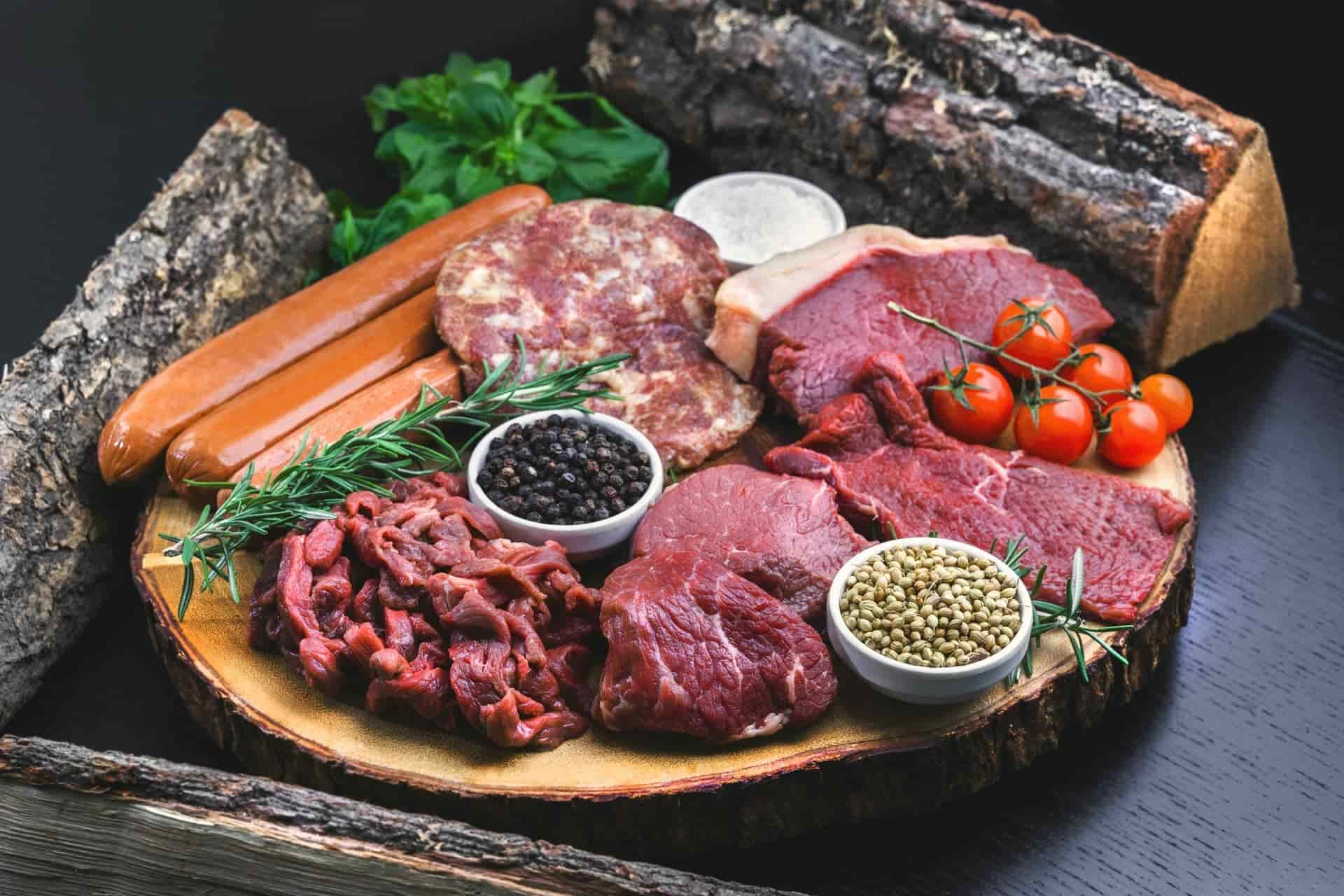
Being vegan or vegetarian can help reduce your environmental impact. Avoiding animal products can help the environment in many different ways. It will also reduce your carbon footprint. Using less meat also reduces your overall food consumption, since animals need a lot of food. You can also choose from a variety of vegetarian or vegan options, if you have concerns about how much meat you consume.
Plant-based diets
There are many environmental benefits to plant-based diets. They use less land and water to produce than meat-based foods. According to Oxford University's research, eating a plant based diet can help save between 35-50% of the land. This can save an estimated 6.6 million pounds of nitrogen fertilizer each year and 280,000,000 metric tons carbon dioxide.
Studies show that 14.5% of human-caused emissions are caused by meat and other animal products. This impact can be reduced by decreasing the number and improving farm practices. Many farms use animal waste as fertilizer. They also capture methane gas that they can then use to produce energy. It is possible to eat animal products, but a greater amount of plant-based food is better.
Flexitarianism
Recent studies on meat reduction and flexitarianism have demonstrated the value of qualitative research, which can identify mundane barriers and facilitators. These barriers and facilitators are usually situated in domains of capabilities and opportunities. These findings are a combination of findings from two explorative investigations that investigated the attitudes and behaviors of Dutch flexitarians regarding their preferred diet.

Research shows that motivations to eat a flexitarian diet can be correlated with both capability and opportunity. These variables are interrelated, and can be used as a basis for understanding the motivations of modern food consumers. These two variables can be used as a guideline to help individuals become food innovators for a healthy world.
Veganism
Veganism offers many benefits but does not meet sustainability criteria. Veganism consumes far less land than most other diets. It sounds wonderful, but eating meat generates five times the emissions of a vegan meal. A better option is to purchase locally grown produce to avoid the emissions created by transporting it long distances. Buying local foods also ensures that you are not supporting a company that exploits workers or uses poor labour practices.
Veganism also has the disadvantage of removing essential nutrients from the body. This is because most plant-based foods are low in essential nutrients. These foods may have some essential nutrients but their bioavailability might be limited. Vegans must ensure that they eat a wide range of foods with varied nutritional values.
Vegetarianism
An assessment of the water and land use can help determine the environmental impact of vegetarian diets. The EAT–Lancet Commission was a group comprised of 16 scientists. It evaluated a variety environmental impacts associated to different diets. It found that vegetarian diets had a lower environmental impact and required the least water or land.
While it is widely known that vegetarianism has many health benefits, policymakers need to be mindful of other factors. For instance, some farmers and pastoralists may find it beneficial to eat meat in certain circumstances. They are increasingly dependent for global markets. To ensure sustainable agriculture, policymakers must consider all the impacts of vegetarian diets.

Pescatarian diets
Although most vegetarians oppose the killing of animals for food, they are better at animal welfare than pescatarians. Since fish don't have a neural network, they don't feel pain, making them a more humane choice. Furthermore, pescatarian diets support sustainable farming practices.
The pescatarian lifestyle is very similar to that of the Mediterranean, Japanese, Nordic, and Nordic diets. There are more fresh fruits and vegetables than meat. It contains much less meat than Western diets that are high in red meat, fat, and carbs.
FAQ
How can I get enough vitamins
The majority of your daily needs can be met through diet alone. However, if you are deficient in any particular vitamin, taking supplements can help. You can purchase a multivitamin that includes all the vitamins needed. You can also buy individual vitamins at your local pharmacy.
Talk to your doctor about the best foods for vitamins if you're concerned about not getting enough nutrients. You can find vitamins K and E in dark green leafy vegetable such as spinach, kale and turnip leaves, as well romaine lettuce and arugula.
Ask your doctor if you're not sure how many vitamins you should take. Your health history and current condition will inform the doctor about the recommended dosage.
Why should we have a healthy lifestyle to begin with?
Living a healthy lifestyle can help you live longer and more happy lives. Healthy eating habits, regular exercise, healthy sleep habits, stress management, and good sleep habits can help to prevent heart disease, stroke, diabetes, cancer, and other serious diseases.
Healthy lifestyles will help us to cope with daily stresses better and improve our mental health. Healthy living will boost self-confidence and make you look and feel younger.
How to measure bodyfat?
The best way to measure body fat is with a Body Fat Analyzer. These devices are used to measure the percentage of bodyfat in people who desire to lose weight.
Statistics
- According to the Physical Activity Guidelines for Americans, we should strive for at least 150 minutes of moderate intensity activity each week (54Trusted Source Smoking, harmful use of drugs, and alcohol abuse can all seriously negatively affect your health. (healthline.com)
- This article received 11 testimonials and 86% of readers who voted found it helpful, earning it our reader-approved status. (wikihow.com)
- According to the 2020 Dietary Guidelines for Americans, a balanced diet high in fruits and vegetables, lean protein, low-fat dairy and whole grains is needed for optimal energy. (mayoclinichealthsystem.org)
- nutrients.[17]X Research sourceWhole grains to try include: 100% whole wheat pasta and bread, brown rice, whole grain oats, farro, millet, quinoa, and barley. (wikihow.com)
External Links
How To
What does "vitamin" actually mean?
Vitamins are organic compounds that can be found in foods. Vitamins allow us to absorb nutrients from food. Vitamins are not made by the body, so they must be obtained through food.
There are two types vitamins: water soluble or fat soluble. Water-soluble vitamins dissolve in water easily. Some examples include vitamin C,B1 and B2 vitamins (thiamine), B2 and riboflavin, B3 and niacin, B6 vitamins (pyridoxine), B6 vitamins (niacin), folic acids, biotin, pantothenic acids, and Choline. Fat-soluble vitamins are stored within the liver and in fatty tissue. Vitamin D, E, K and A are some examples.
Vitamins can be classified according to biological activity. There are eight main types of vitamins:
-
A – Essential for normal growth, and the maintenance of good health.
-
C – essential for proper nerve function.
-
D - necessary for healthy bones and teeth.
-
E is required for good vision and reproduction.
-
K - Required for healthy nerves and muscles.
-
P – vital for building strong bones.
-
Q - aids digestion, absorption and absorption iron
-
R is required for the production of red blood cells.
The recommended daily intake (RDA), of vitamins varies with age, gender and physical conditions. The U.S. Food and Drug Administration has established the RDA values.
For adults over 19 years, the RDA is 400 mg per day for vitamin A. For fetal development, pregnant women require 600 micrograms per daily. Children ages 1-8 require 900 micrograms per day. Infants below one year of age need 700 micrograms daily. But, between 9 months to 12 months of age, the amount drops to 500micrograms per days.
Children ages 1-18years who are obese need 800 micrograms per day while those who are overweight need 1000 micrograms per day and children who are underweight need 1200 micrograms per day to meet their nutritional needs.
Children ages 4-8 years who have been diagnosed with anemia need 2200 micrograms per day of vitamin C.
Adults over 50 years of age need 2000 micrograms per day for general health. Mothers who are pregnant, nursing, or have a high nutrient need will require 3000 micrograms a day.
1500 micrograms are required daily by adults over 70 because they lose approximately 10% of their muscle each decade.
Women who are pregnant or lactating need more than the RDA. Pregnant mothers need 4000 micrograms per daily during pregnancy and 2500 after giving birth. Breastfeeding mothers need 5000 mg per day when breastmilk is being produced.